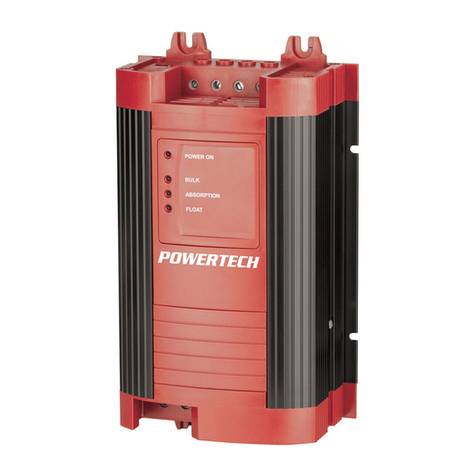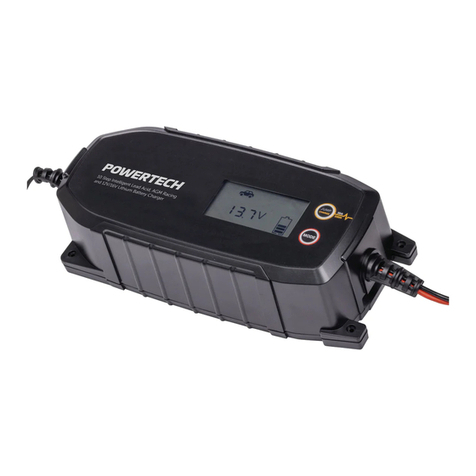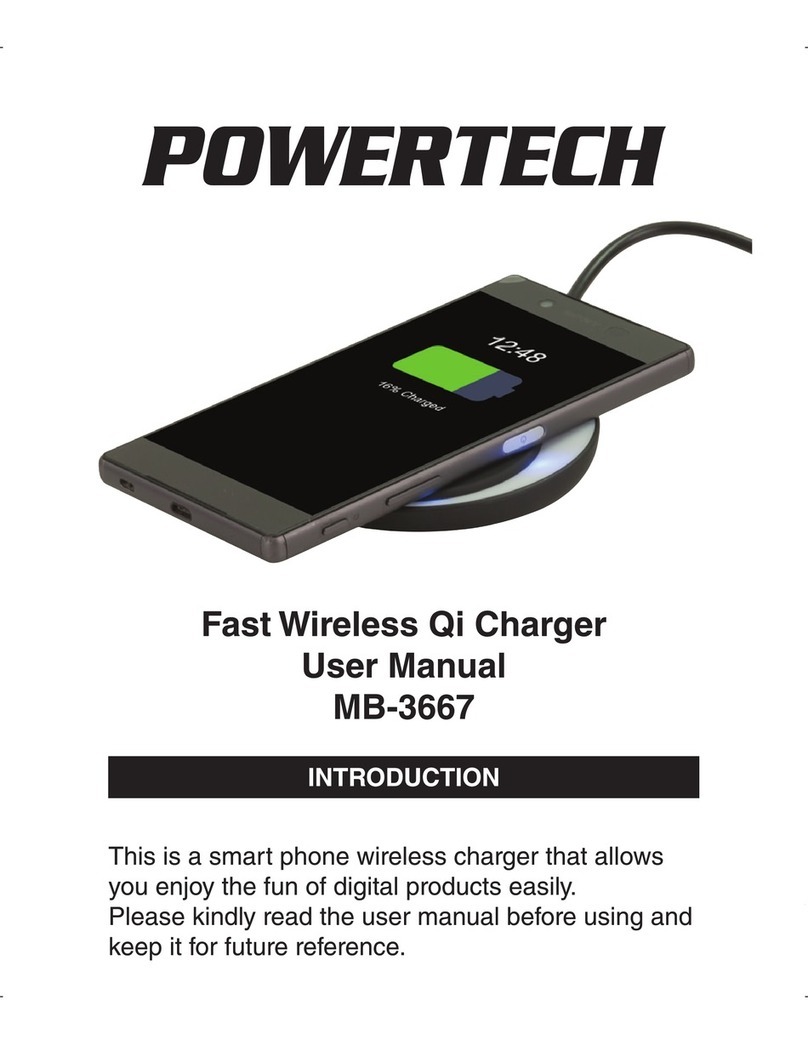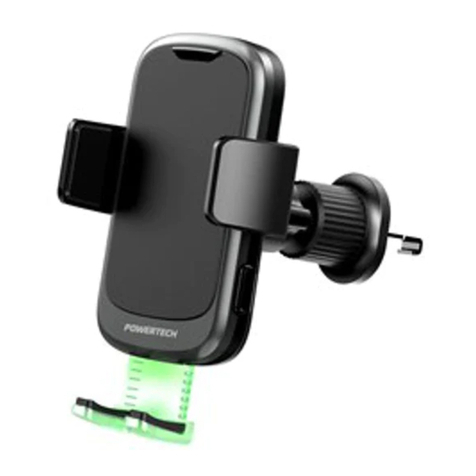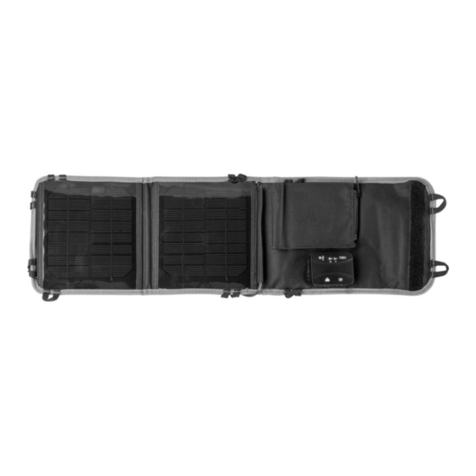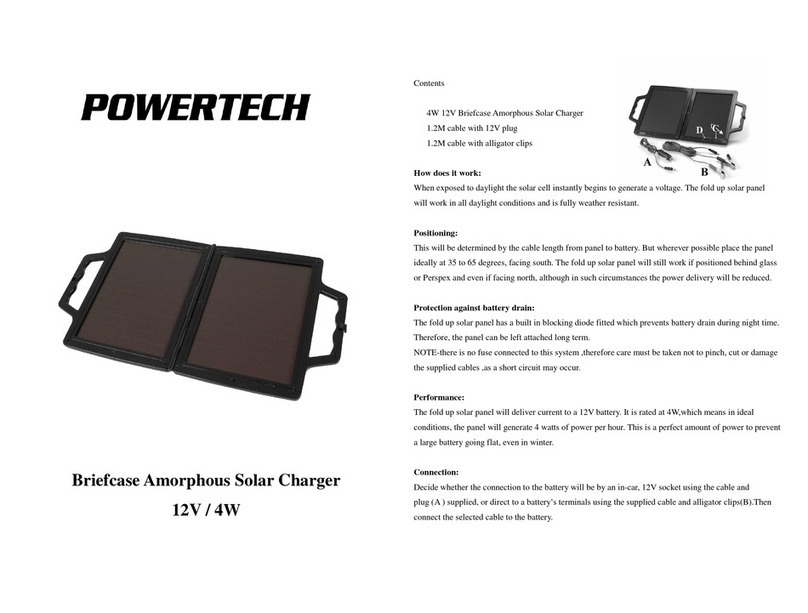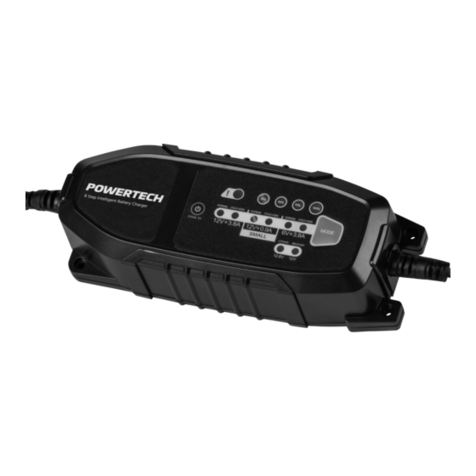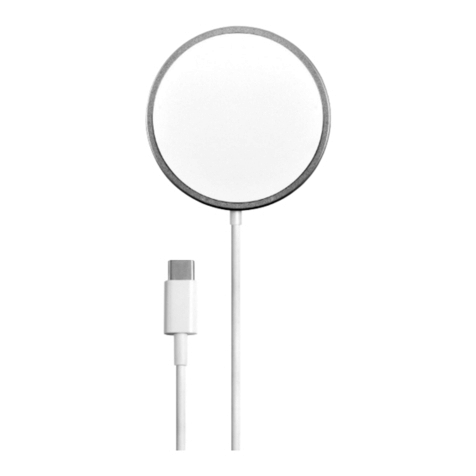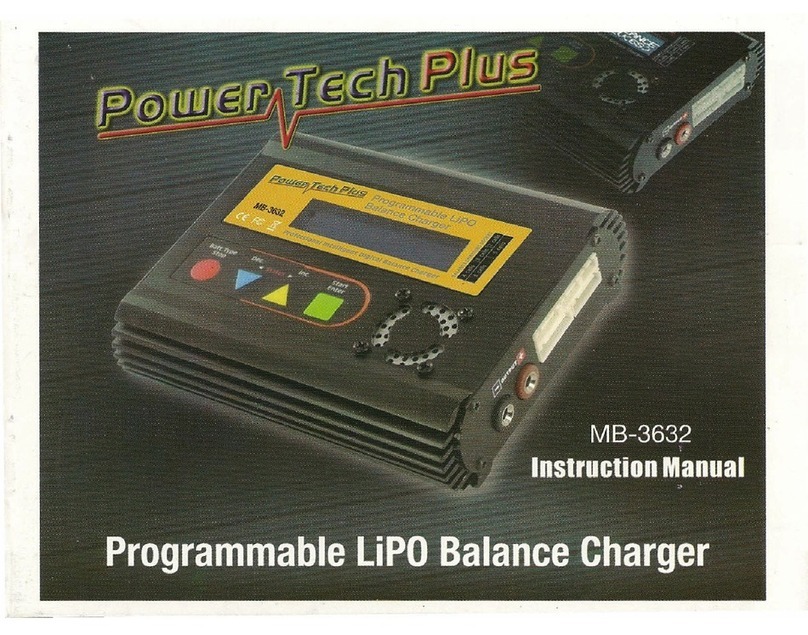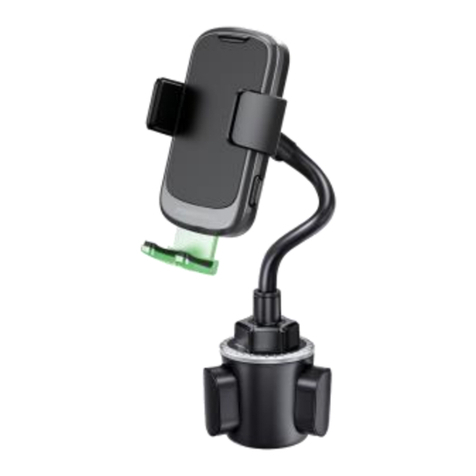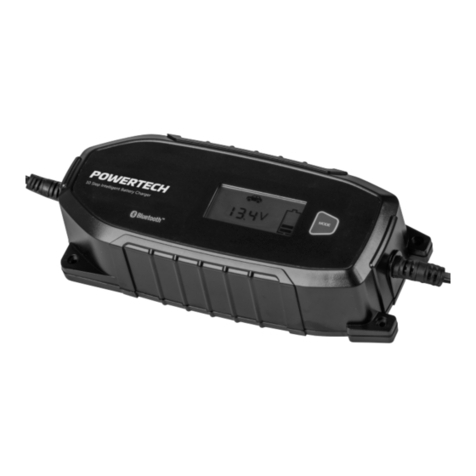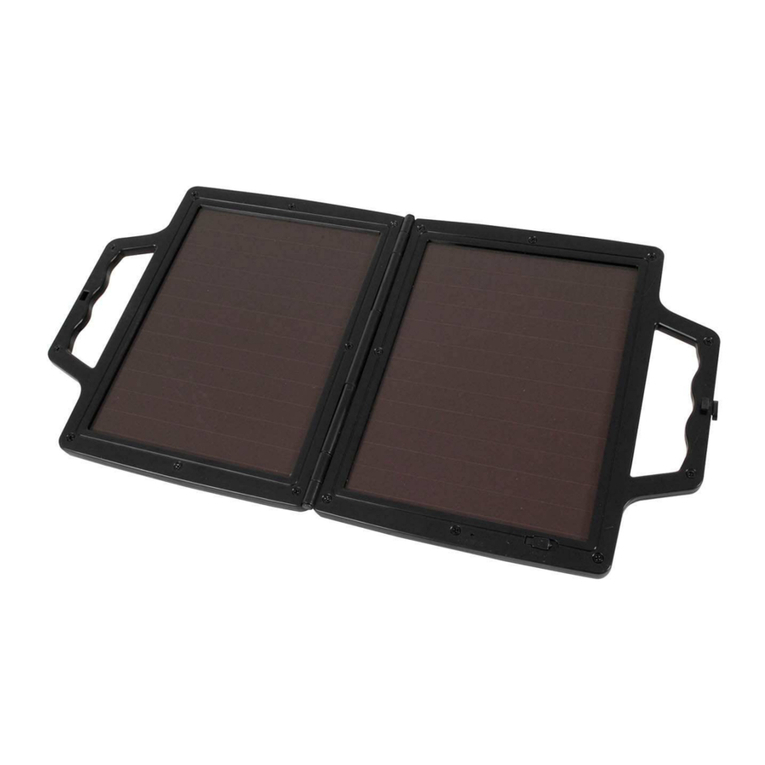2
Your battery charger is designed to charge, condition, and auto maintain your
batteries during short or long term periods of storage or non use. Please follow
these steps each time you use your charger:
1. Please read through the manual to understand the warnings.
2. Ensure the charger is installed exactly as described in installation instructions.
3. Connect a heavy duty UL approved extension cord to your battery charger first.
After connecting the extension cord to the charger, proceed to plug the extension
cord to a nearby 240 VAC GFCI protected (Ground Fault Circuit Interrupt) outlet.
After power is supplied to the charger, the Power LED lights solid blue.
4. Then the analyze LED under Charge Mode starts flashing red, indicating the
charger is in analyze state. Analyzing may take up to 2 minutes and is followed
by the self test where all wired connections, battery type (has to be > than 2.5
Volts DC) and battery’s ability to accept charge is checked for faults. Assum-
ing there are no battery faults, the System Check OK LED lights solid green
and the charging operation begins:
Note: If there is a bad connection, reverse polarity, or a battery that is below 2.5 VDC that can
not accept a charge then the Battery Trouble Status LED lights solid red for the battery that
requires attention. See page 26 for further troubleshooting details.
5. The charging LED under Charge Mode lights solid red and stays illuminated-
throughout the whole charging process, indicating the charger has started its
multi-stage charging procedure. For more information, please see Multi-Stage
Charging Overview section in this manual.
Note: While charging, observe the Charge Monitor LED to check the battery
charging progress.
6. Then the charging LED under Charge Mode turns off and the conditioning LED under
Charge Mode lights solid amber, indicating that thecharger is holding all batteries at
14.6 VDC and is conditioning each battery for up to 3 hours if necessary.
7. When the charging process is complete (or if your batteries are fully charged when you
apply AC power) the auto maintain LED under Charge Mode starts blinking green
(Energy Saving Mode), indicating your batteries are fully charged.
Charging Your Batterie
21
Introduction 1-2
CAUTIONS, WARNINGS AND SAFETY INSTRUCTIONS 3-7
General Overview 8
Getting Started 9-10
Installation 11-13
Typical Wiring 14-20
Charging your Batteries 21
Maintenance 22
Troubleshooting 23
Important Charger Operation Note:
After your battery charger is installed and properly connected to the batteries,
you will be ready to plug it to the electrical outlet.
Your battery charger performs charging in 5 stages. The first stage is initializing,
all battery connections and batteries to ensure your boat’s batteries are capable
of being charged safely and in a proper manner. The charger enters into initializing
mode every time it is plugged into a GFCI protected 0 VAC outlet. The self-test
will take up to 2 minutes to complete.
In analyzing mode, the LED under Fast Charge Mode will be flashing red. In the
condition that all batteries are connected properly, are healthy and above 2.5 volts
DC, your charger will register and illuminate the green System Check OK LED.
Next the charger enters fast charging mode. The charging LED under Fast Charge
Mode lights solid red and you can monitor the charging progress by checking the
Charge Monitor LEDs’ color changing from red to green. After the charging LED
under Charge Mode turns OFF, the system enters Optimizing stage and
respectively he Optimizing LED lights solid amber. In this mode the batteries are
kept at 14.6 VDC up to 3 hours per battery if necessary. When charging is done,
the Maintaining LED under Charge Mode lights green, indicating the batteries are
fully charged.
In case the charger does not enter the fast charging mode and the respective fast
charging LED under Charge Mode is not solid red and the System Check OK LED
is not solid green, then examine the following:
Are any of the bank LEDs under Battery Bank Trouble LED solid red, indicating
the battery(s) have either a wiring fault present, such as poor connection, blown
DC cable fuse, the DC cable is wired in reverse polarity, battery cable is wired
across two batteries in series with a high DC over - voltage of 24V or the battery
itself may be under 2.5 volts DC. If any of the above situations occur, refer to the
Troubleshooting section in this manual.
Table of Contents
